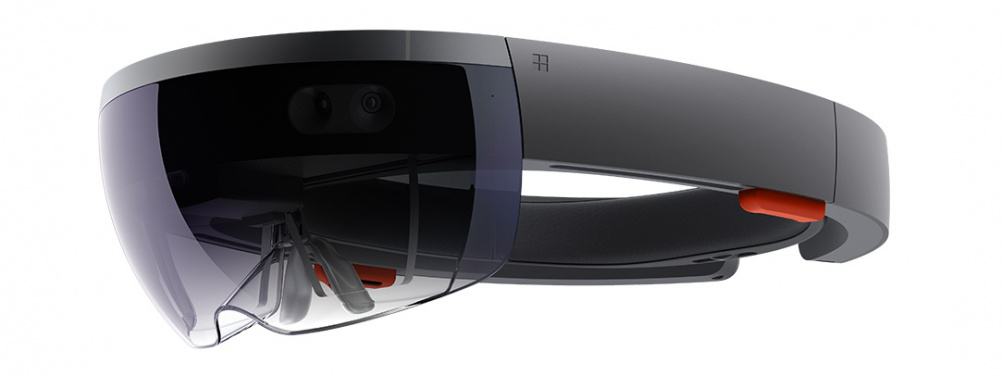 Andrew Wade, senior reporter
Andrew Wade, senior reporter
Earlier this week I had my reality altered in a very dramatic way, and it had nothing to do with a certain orange-faced property magnate. In the pre-Donald calm of Tuesday afternoon – while America was still at the polls – I got a chance to try out Microsoft’s new Hololens device, an untethered headset that allows you to interact with 3D holograms projected into the real world.

The Redmond giant has been on an upward curve since Satya Nadella took over as CEO from the ill-fated Steve Ballmer in 2014, with its cloud business going from strength to strength. But it’s been a long time since Microsoft launched a really innovative piece of hardware, and the Hololens feels like it could be a breakthrough device for the company.
As many of our readers will know, big steps are being made in virtual reality (VR) at the moment, with devices such as the Oculus Rift and HTC Vive getting widely adopted for both commercial and consumer use. VR is a fully immersive technology that can transport you to other worlds, and has a wide array of applications ranging from design and gaming to education and training. But creating entire 3D worlds requires a lot of processing power, and the best VR experiences require the user to be tethered to a CPU, limiting movement to a large degree.
Hololens delivers something different, something that Microsoft likes to term ‘mixed reality’. Rather than taking you to other worlds, the device enhances this one, placing images in whatever environment you happen to be in. It’s a novel take on augmented reality (AR), but with additional capabilities and a high degree of interaction. And because the computing load required is much lighter than VR, Hololens’s processor and battery are contained within the headset, allowing the user to roam freely about the room, interacting with the holograms from any angle.
As a result, the Hololens feels completely different from wearing the Oculus or the Vive, and it’s been designed primarily with commercial – rather than consumer – applications in mind. One of the demos I tried was a mock-up retail experience exploring the build quality and features of a designer watch. The other was an educational programme developed for Case Western University where I was able to observe the various systems of the human body in 3D. Being able to walk around a life-sized hologram of the cardio-vascular system is certainly an engaging way to learn, and you can immediately see the potential benefits. A minor criticism would be that the field of view is not quite as wide as one would like, but this is something that will no doubt improve with future iterations.
For engineers and designers, there’s a lot of potential. Many firms are already using VR at the design stage, but the mixed reality of Hololens offers a different take, allowing multiple users (either in the same room or geographically dispersed) to observe and interact with 3D designs concurrently. Companies like Autodesk and Trimble Navigation are already using the device in this way, and others will likely be joining them now that Hololens is commercially available, setting you back around £2,700.
https://www.youtube.com/watch?v=eiiTdvLZ38E
Perhaps more interestingly, Hololens could also be used to assist assembly, manufacturing and repair. Volvo, for instance, as well as investigating the potential of the device in the design lab and the showroom, is looking at how it could help workers on the production line. European conglomerate ThyssenKrupp is trialling the technology for elevator repair, helping technicians identify problems ahead of a call-out, and providing remote, hands-free access to technical and expert information when onsite, via holograms and Skype.
Other big names testing the waters include Japan Airlines, which is using Hololens to enhance training, and NASA’s Jet Propulsion Laboratory (JPL), which is using the technology to place holograms into Mars environments created from images taken by the Curiosity Rover. Over the next few months, The Engineer will hopefully be looking at some of these use cases in depth for an upcoming issue, as well as the technology that enables the Hololens to create this strange new reality.











Water Sector Talent Exodus Could Cripple The Sector
Well let´s do a little experiment. My last (10.4.25) half-yearly water/waste water bill from Severn Trent was £98.29. How much does not-for-profit Dŵr...